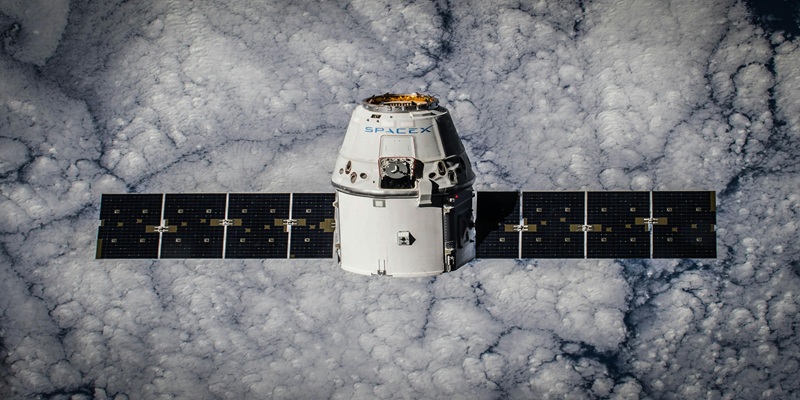SpaceX, founded by Elon Musk, is revolutionizing space travel. At the forefront of this change is the Starship, a fully reusable spacecraft designed for deep space missions. With ambitions to colonize Mars and make interplanetary travel possible, this spacecraft represents a major shift in how humans explore the cosmos. It is not just about reaching space; it is about making it more affordable, sustainable, and frequent.
Reusability: Cutting Costs and Increasing Accessibility
One of the most groundbreaking aspects of Starship is its full reusability. Traditional rockets are discarded after a single launch, leading to high costs. However, Starship and its Super Heavy booster can return to Earth, land vertically, and be used again. This capability dramatically reduces the price of space travel. Lower costs mean more opportunities for scientific research, commercial ventures, and even space tourism.
Why Reusability Matters
- Reduced Launch Costs – Reusing rockets brings down expenses significantly.
- More Frequent Missions – Starship’s quick turnaround enables regular flights.
- Sustainable Space Travel – Less waste is produced, making it environmentally friendly.
Mars Colonization: A Bold Vision for Humanity
Elon Musk’s long-term vision is to make life multi-planetary. Starship plays a critical role in achieving this goal. With its ability to carry up to 100 passengers and large cargo loads, it is designed to establish human settlements on Mars.
How Starship Supports Mars Missions
- Large Cargo Capacity – It can transport essential supplies for colonization.
- Refueling in Orbit – This allows it to travel long distances without excessive fuel weight.
- Advanced Life Support Systems – These ensure human survival in deep space.
Moon Missions: NASA and Starship’s Lunar Role
NASA has chosen Starship for its Artemis Program, which aims to return humans to the Moon. The spacecraft will serve as a lunar lander, ferrying astronauts from orbit to the lunar surface. This partnership highlights SpaceX’s growing influence in space exploration.
Advantages for Lunar Exploration
- More Affordable Moon Missions – Starship’s cost-effectiveness benefits NASA and private firms.
- Large Cargo Capacity – This helps build long-term lunar bases.
- Advanced Technology – Starship offers cutting-edge navigation and landing precision.
- Starship’s Role in Space Tourism and Commercial Flights
Space travel is no longer exclusive to astronauts. Companies like SpaceX are making it possible for civilians to venture beyond Earth. Starship could revolutionize space tourism, offering trips around the Moon or even to Mars in the future.
How Starship Enhances Space Tourism
- Lower Ticket Prices – Reusability makes spaceflight more affordable for private individuals.
- Comfortable Travel – Spacious interiors allow passengers to experience zero gravity in comfort.
- Interplanetary Adventures – Future missions could include vacations on the Moon or Mars.
Interplanetary Cargo Transport: A Space Freight Solution
Beyond human spaceflight, Starship is expected to revolutionize cargo transport. Governments, research institutions, and private companies will be able to send payloads efficiently.
Why This Matters
- Faster Space Cargo Delivery – Starship can reach destinations in record time.
- Cost-Effective Logistics – Affordable launches benefit global industries.
- Facilitating Deep Space Missions – Supplies can be sent to distant planets.
Starship’s Impact on Science and Research
Scientific exploration will benefit greatly from Starship. Its ability to carry large telescopes, satellites, and research labs will unlock new discoveries. Scientists will have access to equipment that was previously too large or expensive to send into orbit.
Scientific Advancements Enabled by Starship
- Larger Space Telescopes – Advanced astronomy research becomes possible.
- Deep Space Exploration – Missions to the outer planets become more feasible.
- Space-Based Laboratories – Scientists can conduct zero-gravity experiments.
Challenges and Future Developments
Despite its potential, Starship faces obstacles. Technical issues, regulatory approvals, and funding challenges could slow progress. However, SpaceX’s iterative approach to testing and development increases the chances of success.
Key Challenges
- Regulatory Hurdles – Governments need to approve commercial spaceflights.
- Technical Issues – Spacecraft reliability and safety remain top priorities.
- Funding and Partnerships – Large-scale projects require sustained investment.
Conclusion
SpaceX’s Starship is more than just a spacecraft. It is a game-changer for space travel. Its reusability, affordability, and capacity for deep-space missions set the stage for a future where space is accessible to all. Whether through Mars colonization, lunar exploration, or space tourism, Starship is paving the way for humanity’s next great adventure. With continuous advancements, the dream of interplanetary travel is becoming a reality.



































